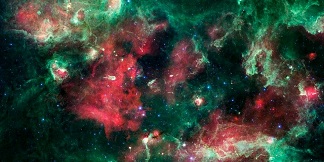 Billions of habitable planets in Milky Way
Billions of habitable planets in Milky Way
Most of the stars in the Milky Way have Earthlike planets meaning there are billions of potentially habitable worlds in our galaxy, a new study claims.
By scouring millions of stars in the night sky over six years, researchers found that the majority of the 100 billion stars in the Milky Way have planets similar to Earth or Mercury, Venus or Mars, the other similar planets in our solar system. They estimated that in our galaxy there are about 10 billion stars with planets in the "habitable zone" – the distance from the star where solid planets can be found – many of which could in theory be capable of supporting life. Dr Martin Dominik, a German research fellow at St Andrews University, said: "Even if life existed on only one planet in each galaxy there would still be 100 billion in the universe. "We still don't have the evidence of life on another planet, and we could be unique, but confronted with these numbers it seems highly unlikely. "There are a small number of planets which we think could harbour life, a small number of candidates with what we believe might be the right conditions."





